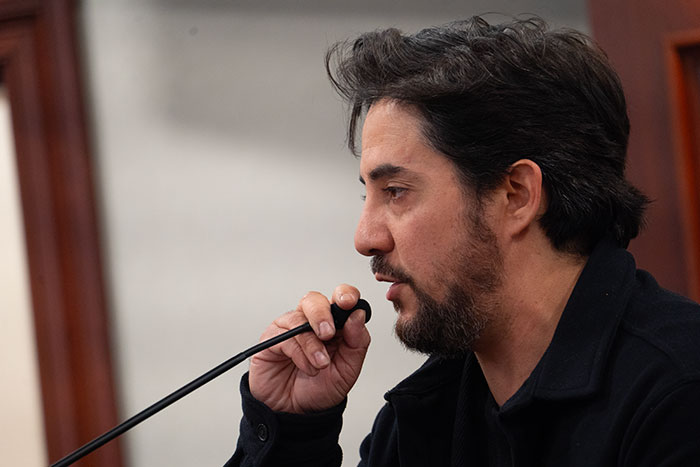CUSD partners with city to fund new police command center
When the Claremont Police Department buys a new mobile command center, a purchase expected to take place within the next 6 months, they will be getting a little help from the Claremont Unified School District.
Acting on behalf of the local police, the city recently asked the district to contribute to the purchase of the vehicle, which is expected to cost between $1.4 million and $1.6 million.
The district has agreed, reported Lisa Shoemaker, assistant superintendent of business services, at the Thursday, June 21 meeting of the CUSD board of education. One rationale behind the request, she shared, is that Claremont High School would be a likely staging ground for emergency operations should a large-scale crisis occur.
The high school served as an emergency operations headquarters during the Grand Prix fire of 1993, according to Captain Jon Traber of the Claremont Police Department.
The new mobile command vehicle is meant to take the place of the police department’s emergency operation center located above city hall, which Claremont Chief of Police Paul Cooper says fails to fulfill county space requirements.
In an agreement hammered out between former interim CUSD Superintendent Gloria Johnston and City Manager Tony Ramos, the district has pledged to contribute $20,000 per year towards the new mobile emergency vehicle for the next 3 years.
The funds are coming from safety credits, which are awarded to the district through its workers compensation and liability programs as an incentive for safety training and other safety-promoting measures. Safety credits may be used for the one-time purchase of items that help to reduce the occurrence and severity of employee work-related injuries and district claims.
Ms. Shoemaker noted that the district has, in the past, used safety credits to purchase ergonomic equipment for employees. Other possible uses for safety credits are personal protective equipment (i.e. steel toe/metatarsal guard shoes, gloves, safety glasses and respirators); safety and/or health-related in-services, workshops and seminars (including travel) relative to employee protection; pre-placement physicals and drug and alcohol testing.
“[Safety credits] can be used for…things that contribute to the general safety and wellbeing of our staff, students and families,” Ms. Shoemaker said. “We do not commit them to ongoing expenditures, as we never know when our experience may be such that we do not receive any credits.”
The majority of funding for the new vehicle is coming from a $1.1 million tech grant the city received in 2009, specifically designated for the purchase of a mobile command unit. Another $100,000 has been raised via the sale of the Claremont police’s previous mobile command unit, which is 11 years old, to the city of Calexico.
The city has also reached out to the Claremont Colleges to help fund the vehicle, a request still under consideration, according to Mr. Ramos.
The word vehicle doesn’t really begin to describe the new mobile command unit, which will be a 53-foot truck rig with a large tractor, said Captain Traber.
“Picture an 18-wheeler like you see on the open road,” he said.
Captain Traber notes that mobile command vehicles of the sort the city is currently pricing are designed to be stand-alone emergency operation centers. They include seating and redundant communication systems—telephone communications, landline access and, if the former 2 systems fail, satellite capability.
“Communication with the school district during an emergency is critical,” Captain Traber said. “They would clearly be involved in any emergency operations we were involved in.”
Joe Tonan, a sixth grade teacher at Sumner Elementary and the former president of Claremont’s faculty union, expressed some dismay over the district’s decision to help fund the new police vehicle.
“It just surprised me, and the teachers were unaware of this large expenditure. Teachers were not asked about it,” he said. “It would have been good if Dr. Johnston had asked teachers to get their insight into it, or their opinion on whether this was needed.”
Mr. Tonan said there are numerous other safety needs within the district that need to be addressed.
“At the high school, securing the windows so that sawdust and mold don’t fly into them when they’re working on them—that would seem to be a good expenditure,” he said.
Mr. Ramos emphasized that the mobile command unit will serve the entire community.
“We partner with our schools all the time with facilities agreements that benefit both agencies,” Mr. Ramos said. “It’s one of my strong goals to continue to partner with other agencies to provide services in a way that is more efficient financially and with regards to service delivery.”
—Sarah Torribio
storribio@claremont-courier.com










0 Comments